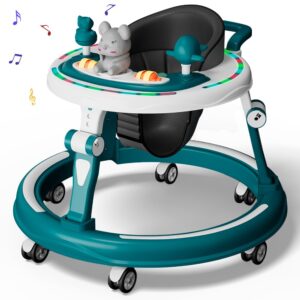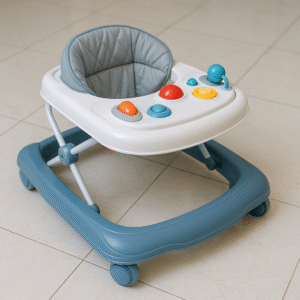When babies begin to show signs of mobility, many parents think about using a baby walker. While these devices are widely used in Indian households, it’s essential to understand the baby walker pros and cons before making a purchase.If you’re also considering whether to buy a push walker or traditional baby walker, our Baby Walker vs Push Toy guide in 2025 offers a helpful comparison. In this article, we’ll help you weigh the benefits and drawbacks so you can make a well-informed decision in 2025.
✅ Baby Walker Pros
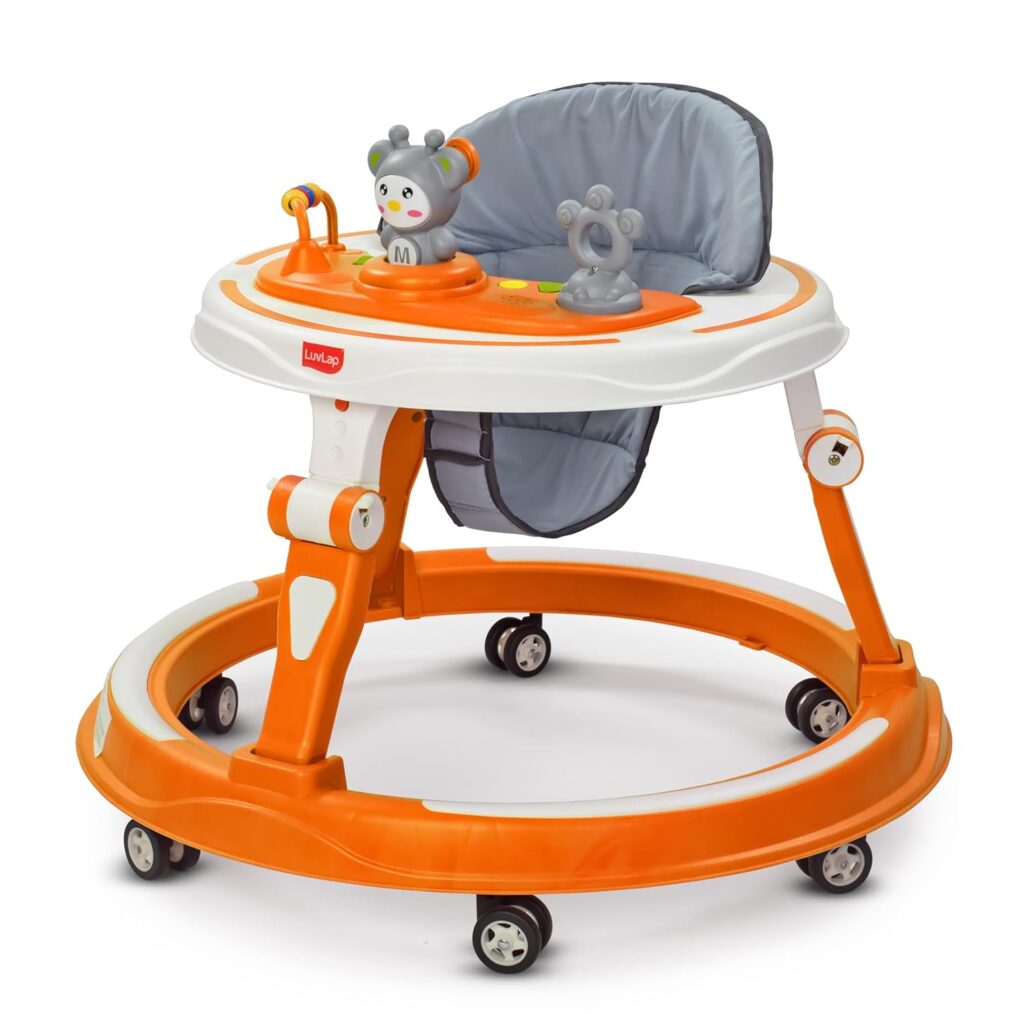
Current Offer – 1,648
MRP – 2,895
1. Encourages Movement and Early Exploration
One of the key pros of baby walkers is that they allow your baby to move around and explore independently. This helps improve leg coordination and builds muscle strength in a safe and supported way.
2. Keeps Baby Entertained
Many walkers include fun features like music, lights, rattles, and toys. These added elements can keep your baby busy and entertained, especially during times when you’re attending to other tasks.
3. Builds Leg Muscles
Another positive point in the list of baby walker pros and cons is muscle development. The standing and stepping motions strengthen your baby’s legs and give them the confidence to try walking.
4. Provides Temporary Mobility
Baby walkers offer safe mobility in a baby-proofed environment. Your baby can move around under your supervision, giving them a sense of independence while still being secure.
❌ Baby Walker Cons
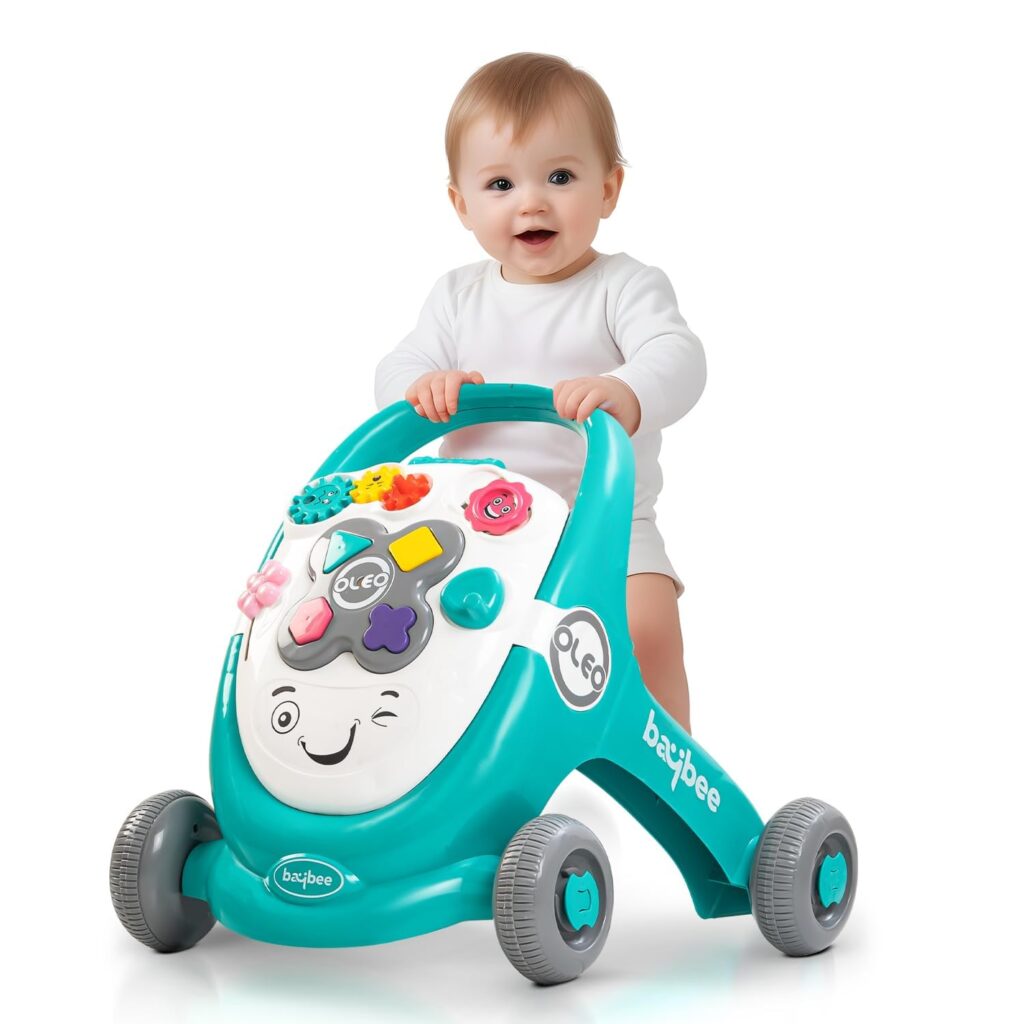
1. Can Delay Walking Milestones
According to pediatric studies, overuse of walkers may actually slow down your baby’s natural walking progress. This is one of the most important points when considering baby walker pros and cons seriously.
2. Safety Hazards
Without proper supervision, walkers can lead to injuries—like tipping over or falling down stairs. They should only be used in a completely safe and flat area under adult supervision.
3. Promotes Poor Posture
Walkers sometimes encourage babies to push using their toes instead of the soles of their feet. This can result in poor posture and an unnatural walking pattern.
4. Short Usage Window
A baby walker is only useful for a few months. Babies outgrow them quickly, making it a temporary item in your baby gear collection.
How to Use a Baby Walker Safely – Baby Walker Pros and Cons
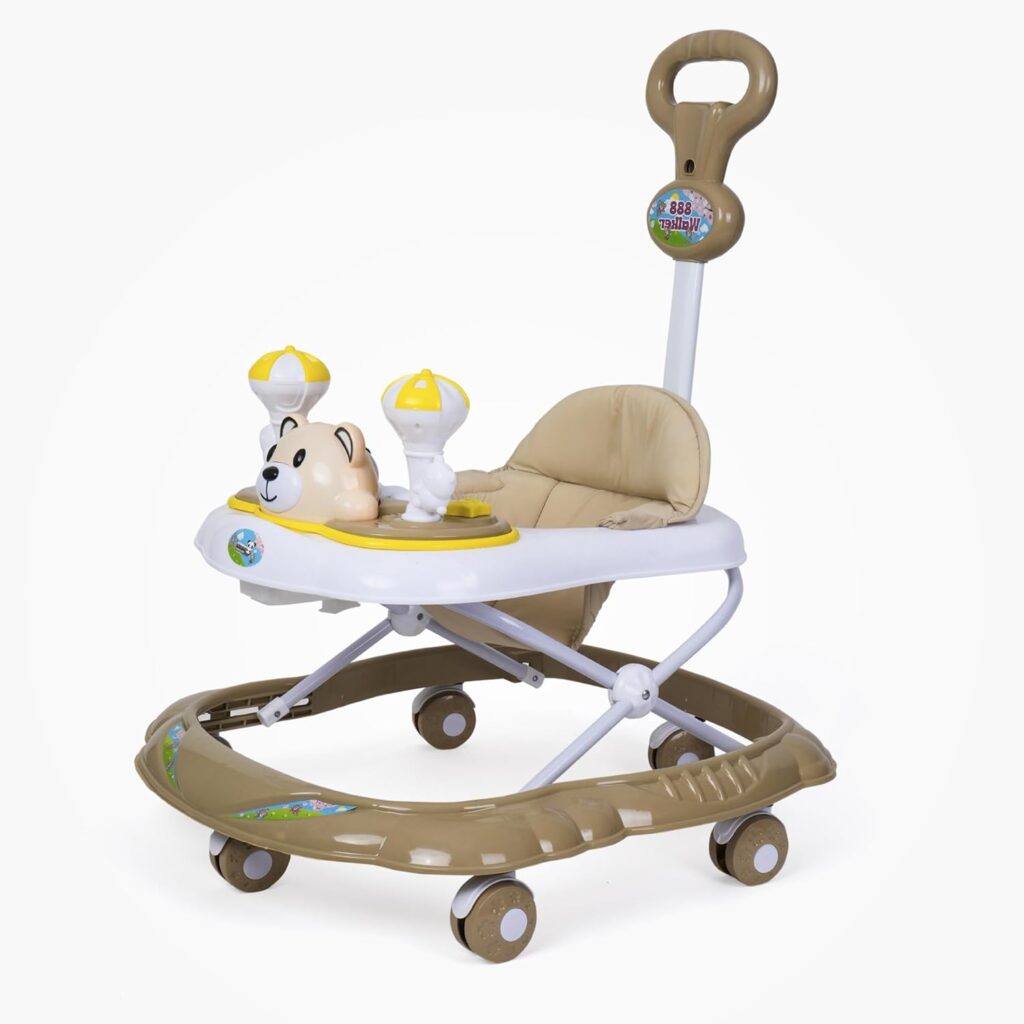
To make the most of a baby walker while reducing potential risks, follow these essential safety guidelines:
- Limit usage to short sessions (15–20 minutes).
- Always supervise your baby closely.
- Use walkers only on flat, secure surfaces.
- Choose a walker with wide bases and wheel locks.
Being aware of the baby walker pros and cons can help you avoid common mistakes and keep your baby safe.
Safer Alternatives to Baby Walkers
If you’re concerned about the cons, here are some safer alternatives:
- Push Walkers – Encourage balance and independent walking.
- Stationary Activity Centers – Offer fun play without movement.
- Play Yards with Toys – Provide freedom of movement and safety.
These options support development without some of the risks associated with traditional walkers.
Final Thoughts – Baby Walker Pros and Cons
Understanding the baby walker pros and cons will help you make the best decision for your little one in 2025. While walkers offer some developmental and entertainment value, safety and correct usage are crucial. Always consult with your pediatrician if you’re unsure whether a walker is the right choice for your baby.Also consider reading about the Best Time to Start Using a Baby Walker in 2025 to avoid common mistakes.
FAQs on Baby Walker Pros and Cons
1. Are baby walkers good or bad for babies?
Both. Baby walkers have pros like muscle development and entertainment, but also cons like delayed walking and safety risks. Using them with care is the key.
2. Can baby walkers delay walking?
Yes, studies show that overuse of walkers may delay walking milestones by changing how babies learn balance and coordination.
3. What age is best for using a baby walker?
Typically, between 6 to 12 months—but only if your baby can sit upright on their own and shows leg strength. Always consult your pediatrician.
4. What is a safer alternative to baby walkers?
Push walkers, activity centers, and tummy time on the floor are all safer and development-friendly alternatives.
5. How long can a baby stay in a walker?
Limit to 15–20 minutes per session. Extended use is not recommended.


